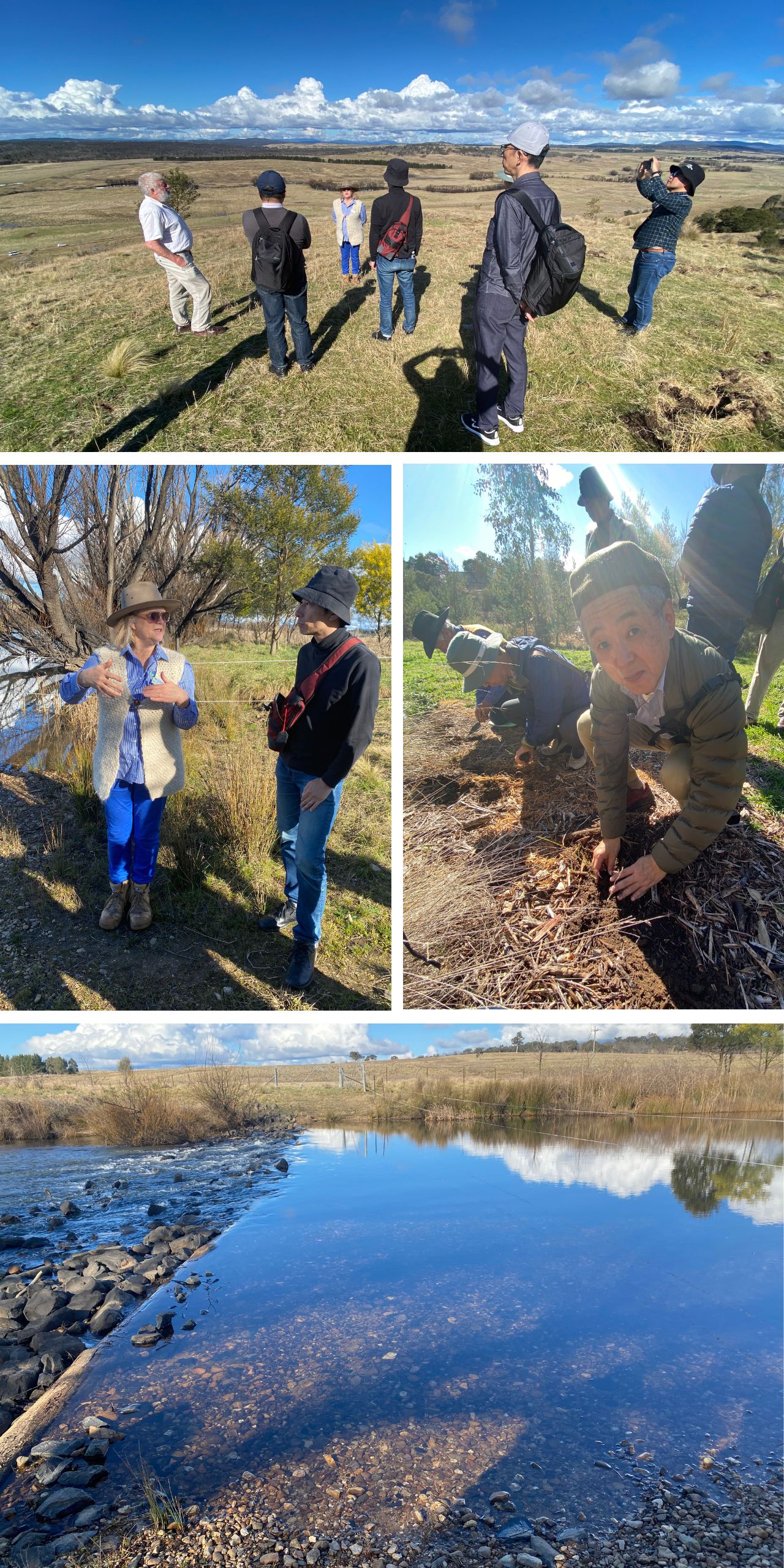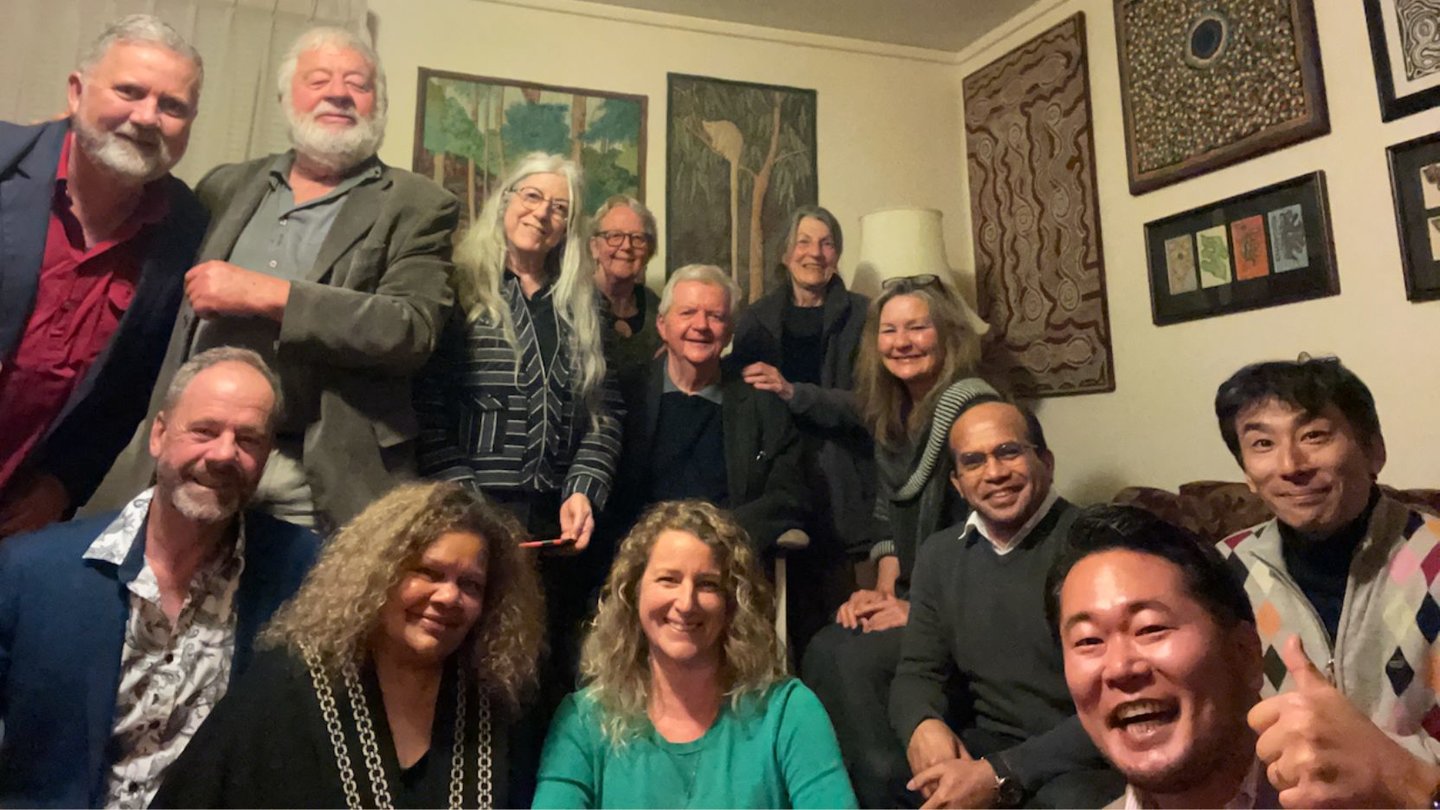Landcare advocates and enthusiasts came together earlier this month to share a meal, discuss their Landcare journeys and celebrate a milestone event recognising First Nations intellectual property rights through the signing of a Treaty at Parliament House.
The informal gathering was hosted by Landcare ACT’s Chair, Maxine Cooper, and included international visitors with Global Landcare, and other guests from Landcare Victoria, Landcare NSW, the National Landcare Network, First Nations artist and advocate Bibi Barba and long-time landcarer, Jen Quealy.
Maxine Cooper and NLN’s Mel Tyas shared the honour of being invited by Bibi Barba to a celebration of the conclusion of the World Intellectual Property Organization’s (WIPO) Treaty on Intellectual Property, Genetic Resources and Associated Traditional Knowledge (GRATK Treaty) with the visiting Director General of WIPO, Mr Daren Tang, on 15 August 2024 at Australia’s Parliament House.
The GRATK Treaty is groundbreaking and establishes a new form of legal recognition for Indigenous Peoples’ traditional knowledge in the international intellectual property system. This treaty is a foundational step in better respecting and recognising First Nations millennia of innovation in the IP system. A new joint initiative between Australia and WIPO on international IP training and mentoring for Indigenous bushfood businesses was launched at the celebration.
The NLN and Landcare ACT also supported Global Landcare by taking six delegates from Japan’s Nanzan University, led by Dr Kazuki Kagohashi to visit three different Landcare sites. The day started at Lyneham Wetlands with a Welcome to Country and a stirring immersion into listening and hearing the land through song, bird and water noises, led by Uncle Wally Bell, esteemed Ngunawal Elder.
A short trip to Queanbeyan followed, where the delegates planted seedlings and listened to the knowledge shared by Tom Baker and other members of Queanbeyan Landcare about the local ecology and impacts of long-term Landcare activity with the community who have been caring for the site for many years.
The final stop took the group to Mulloon Creek, to visit the Mulloon Institute’s work, a legacy of the visionary ‘pioneer’ and founder, Tony Coote. The project encompasses 23-landholder properties and a collaborative rehydration project along the Creek system, that is showing the benefits and impact of long term, community-based Landcare activities, supported by thorough research, community partnerships, innovative project funding and knowledge sharing pathways. The Mulloon Institute’s Nolani McColl led the group through the thriving farming landscape, highlighting the positive impacts of the work in supporting threatened and vulnerable species. Nolani introduced the landscape rehydration and regenerative land management principles and practices showing the group the impressive results of years of riparian and pasture zone repair and revival.
Among the group of Japanese professors were a water hydrologist, a philosopher and social ethicists. Global Landcare exchanges such as these help to bring recognition and reflection on the hard and persistent work happening across Australian landscapes and allows visitors to take Landcare activities and ways of achieving impact through community back to their own cultural environments and communities.


